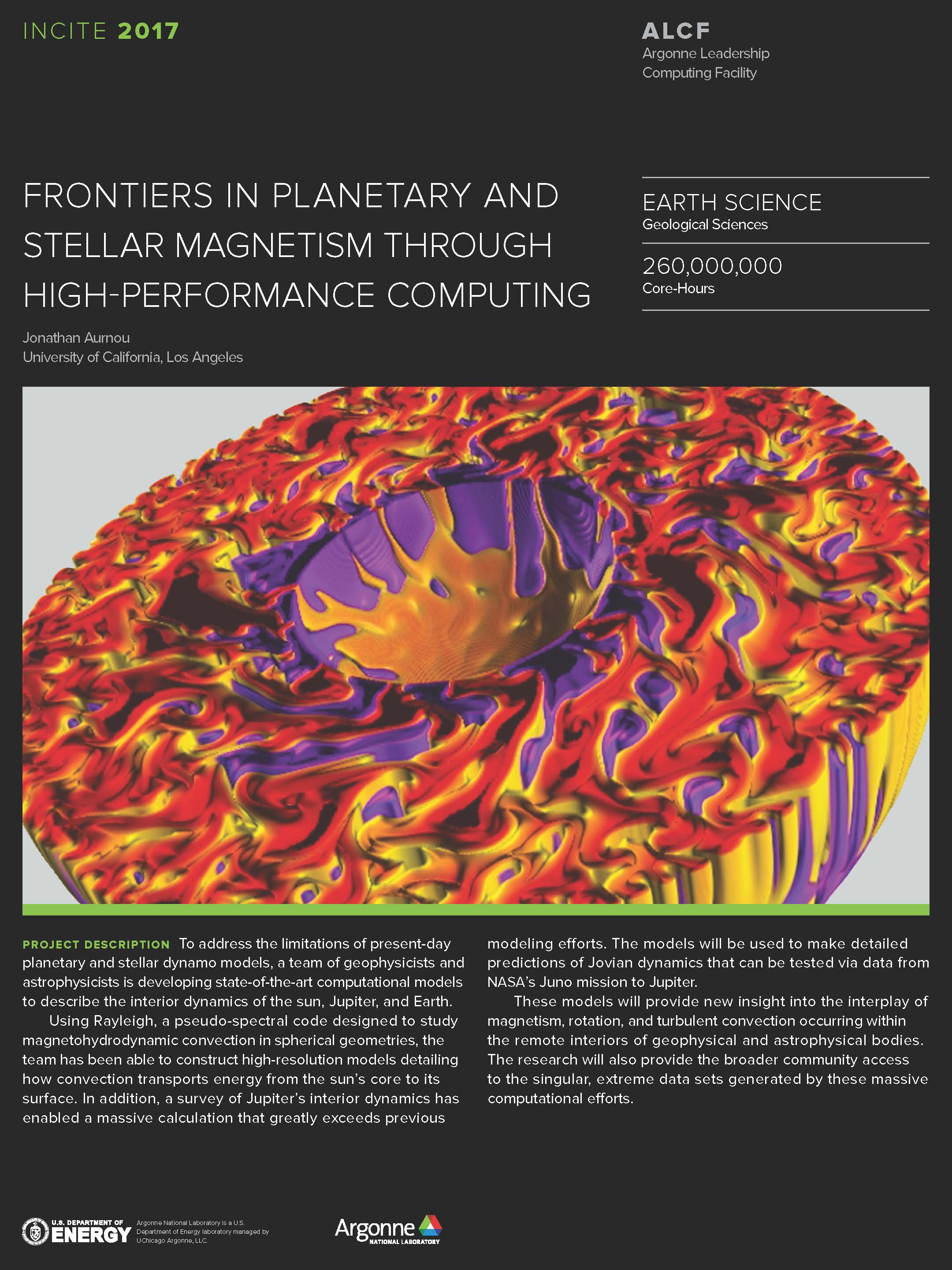Astronomical bodies ubiquitously generate self-sustaining, large-scale magnetic fields that are maintained through the turbulent motions of electrically-conducting fluids. These dynamo processes are now known to operate within diverse cosmologic entities throughout the universe. The existence of a large-scale magnetic field is essential to our understanding of the present dynamical state of a given body, as well as its evolutionary path.
However, dynamo models of both planets and stars, to date, have been unable to resolve strongly turbulent dynamo action in fluids with properties similar to liquid metals and plasmas. Instead, these models simulate dynamo action driven by rotating, convective flows that are nearly laminar. In order for these modest, laminar flows to generate efficient dynamo action, highly electrically-conductive fluids must be employed. To address these limitations, the National Science Foundation’s Computational Infrastructure for Geodynamics (CIG) has developed Rayleigh, an open source, community dynamo code. This code simulates convection driven dynamo action in rotating spherical shells, such as those at the cores of planets and stars.
Researchers propose three dynamo models. The Liquid Metal Geodynamo Model will focus on magnetic-field generation as influenced by the physical properties of liquid metal under high pressure at the cores of terrestrial planets, like the Earth. The Jovian Interior Dynamics Model will help determine where the dynamo process occurs in gaseous planets. And the Extreme Solar Dynamo Model will address the hydrodynamics of sub-surface convection that drives the dynamo responsible for sunspots and magnetic active regions at the solar surface.
83 million core-hours
Argonne National Laboratory, IBM Blue Gene/Q "Mira"
150 million core-hours
Argonne National Laboratory, IBM Blue Gene/Q "Mira"
260 million core-hours
Argonne National Laboratory, IBM Blue Gene/Q "Mira"
July 27 - August 2, 2019, Austin, Texas. INCITE Project Planning and Coordination Meeting.
Bruce Buffett, Hiroaki Matsui, Equatorially trapped waves in Earth’s core, Geophysical Journal International, Volume 218, Issue 2, August 2019, Pages 1210–1225, https://doi.org/10.1093/gji/ggz233

Jonathan Aurnou, PI, UC Los Angeles
Benjamin Brown, U. of Colorado, Boulder
Bruce Buffett, UC Berkeley
Nicholas Featherstone, JILA, U. of Colorado, Boulder
Gary Glatzmaier, UC Santa Cruz
Moritz Heimpel, U. of Alberta, Edmonton
Lorraine Hwang, UC Davis
Louise Kellogg, UC Davis
Hiroaki Matsui, UC Davis
Peter Olson, Johns Hopkins U.
Sabine Stanley, U. of Toronto
Krista Soderlund, U. of Texas, Austin
Rakesh Kumar Yadav, Harvard-Smithsonian CfA

Allocations of computing time are made available through the DOE INCITE program created to provide access to the DOE's Leadership Computing Facility with centers at Argonne and Oak Ridge national laboratories. See their website for more information.
